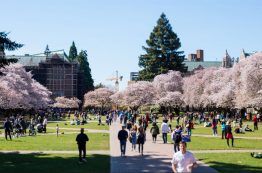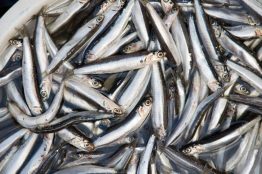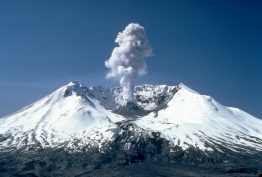It is easy to feel lost when thinking of the vast scope of Earth sciences. After all, Earth sciences covers everything from the microscopic interactions of bacteria all the way to natural hazards like earthquakes and tsunamis. So how do scientists narrow down such a vast subject to prioritize investments into specific research areas? Every ten years, scientists gather in a committee formed under the US National Academies of Sciences, Engineering and Medicine (NASEM) to guide the National Science Foundation (NSF) in exploring priority Earth science questions that need attention over the coming decade.
Read more »NOAA selects UW to host new, regional institute for climate, ocean and ecosystem research
The National Oceanic and Atmospheric Administration announced May 20 that it has selected the University of Washington to host NOAA’s Cooperative Institute for Climate, Ocean and Ecosystem Studies. The new regional consortium will include faculty and staff at the UW, the University of Alaska Fairbanks and Oregon State University. Members will contribute expertise, research capacity, technological development, help train the next generation of NOAA scientists, and conduct public education and outreach.
Read more at UW News »How four UW Environment students are adjusting to online school
We’re constantly impressed at the ingenuity and resilience of College of the Environment students. Now that we have all had time to adjust to this new way of living, we checked in with four students at the College to see how their studies and work lives have changed, hear about the challenges and opportunities they have found in online courses and listen to how they’re taking care of themselves in the era of COVID-19.
Read more »Ocean ‘breathability’ key to past, future habitat of West Coast marine species
Marine life off the West Coast, from Mexico up through Canada, inhabit the California Current. The cool, nutrient-rich water supports life from invisible phytoplankton to the economically important salmon, rockfish and Dungeness crab to the majestic orcas. A new study led by the University of Washington finds that the animals’ ability to breathe in that water may be key to where and when they thrive.
Read more at UW News »Then and Now: The Mount St. Helens Eruption, four decades later
It wasn’t supposed to be Mount St. Helens. In the 1970s, scientists including Emeritus Research Professor Steve Malone (then a postdoctoral researcher at UW) investigated what they believed to be earthquakes on Mount Rainier. Further work determined they were “glacier quakes” instead: As glaciers on a mountain shift, the energy created mimics an earthquake. Then in 1975, Mount Baker began to steam.
Read more »





